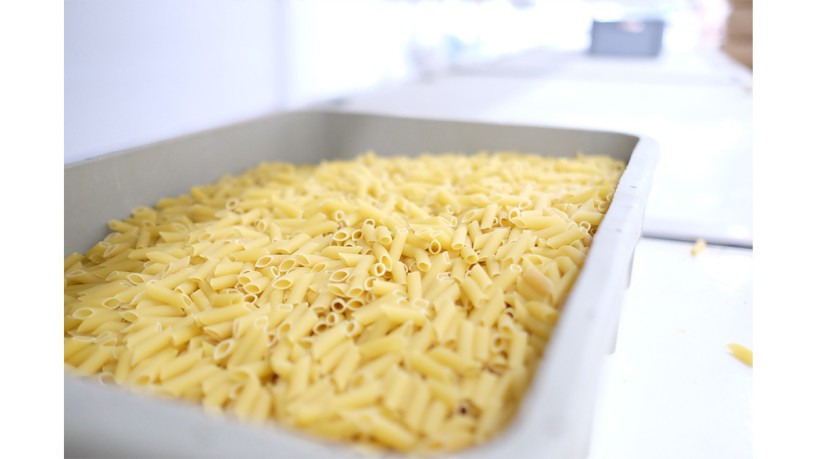Using AI to Create Innovative Products
Taste must be convincing
So how can companies win over such a diverse group of buyers? Research shows that finding the right taste is of central importance. Although nutritional value, protein content and short ingredient lists are still important, Givaudan's proprietary analysis illustrates that taste is still the most important factor in the purchasing decision in this category. The majority (58 %) of consumers want products that are similar in taste, texture and colour to traditional dairy products and can be used in the usual way. In fact, around 2 out of 3 consumers are looking for alternative dairy products that offer a comparable taste experience to conventional dairy products.
The recipe for success: Innovation through collaboration
In diesem Umfeld ist ein kooperativer Ansatz für die Entwicklung wohlschmeckender milchfreier Alternativen unerlässlich. Daher hat Givaudan nicht nur ein globales Innovations-Ökosystem aus Partnern geschaffen, sondern kürzlich auch im „Protein Hub“ in Zürich die interne technologische und fachliche Kompetenz in Sachen alternative Milchprodukte gebündelt und weiter ausgebaut.
Das Team des „Protein Hubs“ bietet Kunden eine ganzheitliche Unterstützung – von der Produktentwicklung bis zur endgültigen Produkteinführung. Beispielsweise können Proteine mithilfe eines KI-basierten Programmes gescreent und ausgewählt werden, um die bestmögliche Maskierung von
Adstringenz und Bitterkeit herauszuarbeiten. Darüber hinaus kann eine externe Zusammenarbeit die Produktentwicklung in Bereichen wie der Entwicklung milchähnlicher Fette und neuer Texturen vereinfachen und beschleunigen.
Der Einsatz von künstlicher Intelligenz (KI) und digitalen Tools erfüllt bei der Entwicklung von erfolgreichen milchfreien Produkten von morgen eine Schlüsselfunktion. Diese Programme und Tools helfen dem Unternehmen bei der gemeinsamen Entwicklung innovativer Produktformulierungen und beim effizienten Testen von Konzepten mit Verbrauchern vor dem Produktlaunch.
A look into the future
Innovative approaches such as Advanced Tools for Modelling (ATOM) are helping to bridge the gap between traditional dairy products and plant-based alternatives: This makes it easy for consumers to discover and enjoy new products with familiar tastes and textures. The continuous development of these and other technologies is opening up exciting possibilities and opportunities for the future of the plant-based dairy products industry:
First: Companies need to figure out how to win over the next generation of consumers - and their parents. Parents are looking for healthy, sustainable and appealing
dairy alternatives that meet their children's nutritional needs while ensuring a smooth transition away from conventional dairy products.
Second: Entrepreneurs need to research the product applications of the future. Consumers of alternative dairy products are always on the lookout for the next big advance to improve the product experience. Will precision-fermented, plant-based casein revolutionise the alternative cheese sector? Or will alternative soft cheese with live vegan cultures become the next trend?
Third: The constantly expanding consumer expectations. Animal welfare and product sustainability are very important to many consumers who consume alternative dairy products. But they are also increasingly interested in other aspects, such as nut-free milk alternatives for allergy sufferers.
And then there is the further development of the technology. Are consumers ready for precision fermentation yet? This process uses microorganisms in the laboratory to replicate the specific proteins in dairy products and offers the opportunity to develop a whole new range of novel, delicious dairy alternatives.

Givaudan - Plant-based Milk
Creating the product of the future
The alternative dairy products currently on the market have paved the way for the arrival of substitute products on supermarket shelves. If the industry continues on this path, it can capitalise on this momentum to further improve the functionality, sensory quality and nutritional value of these products - and offer consumers the tasty dairy alternatives that meet their changing needs.
"RevolutionDairy": The use of AI-driven tools to optimise the taste of plant-based milk
Task: The development of a milk alternative based on soya and chickpea protein that comes very close to the taste, texture and nutritional values of conventional milk by reducing "off-notes" and adding milky, fatty and animal notes.
Approach: Givaudan used its ecosystem of digital and AI-driven tools to find the optimal combination of seven taste building blocks (4 milk notes, 2 maskings and 1 mouth feeling). The Advanced Tools for Modelling (ATOM) use algorithms to test all possible combinations quickly and extremely efficiently. In this case, the experiment designed by ATOM suggested 19 recipes. These were assessed by a panel of sensory experts on the basis of their similarity to the milk reference. Based on these findings, ATOM ultimately generated three optimal versions and the sensory experts then selected the best recipe.
Result: A product that performs better than the products currently available on the market, both in terms of its overall profile and its closeness to a real dairy product.




